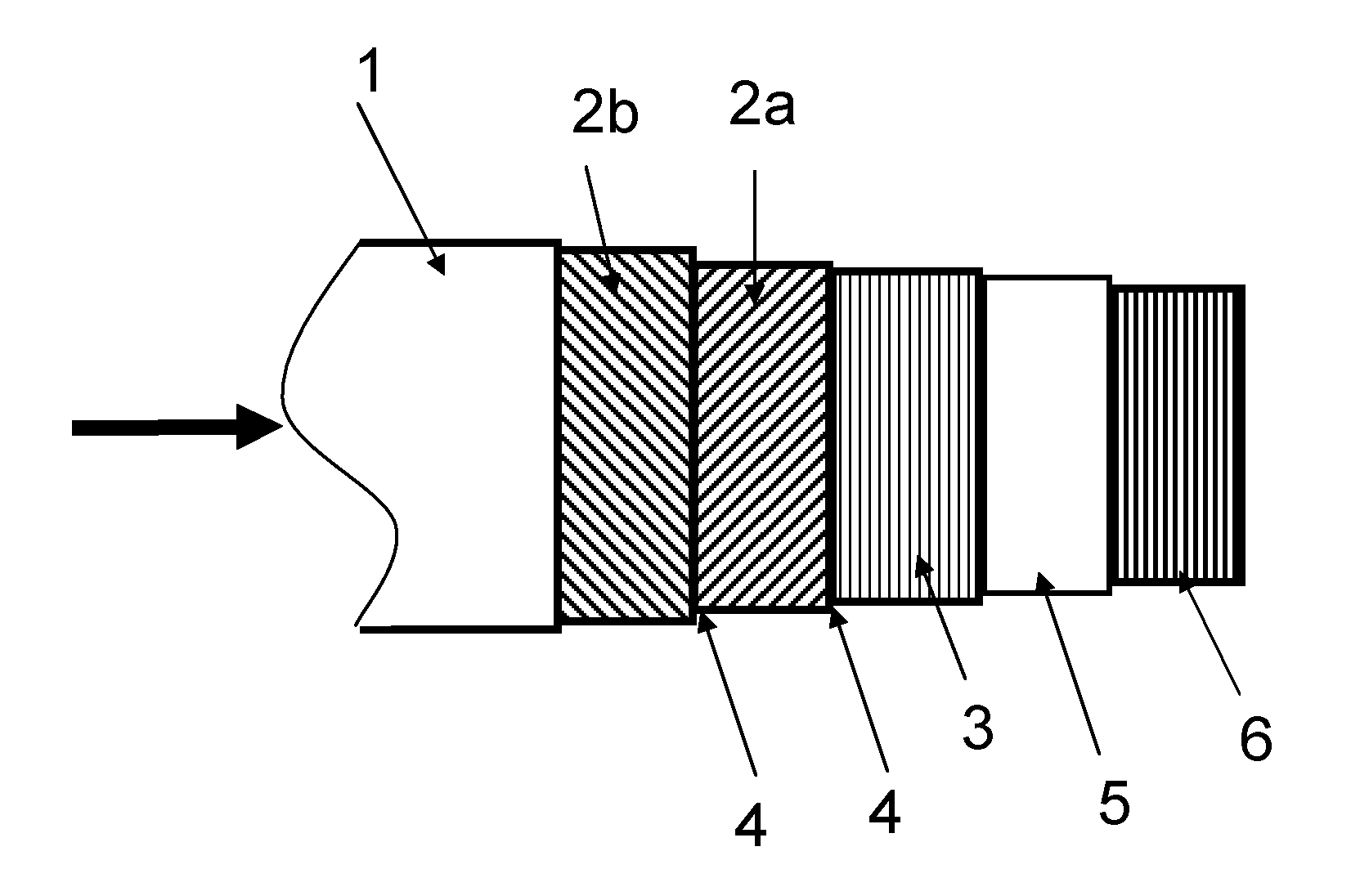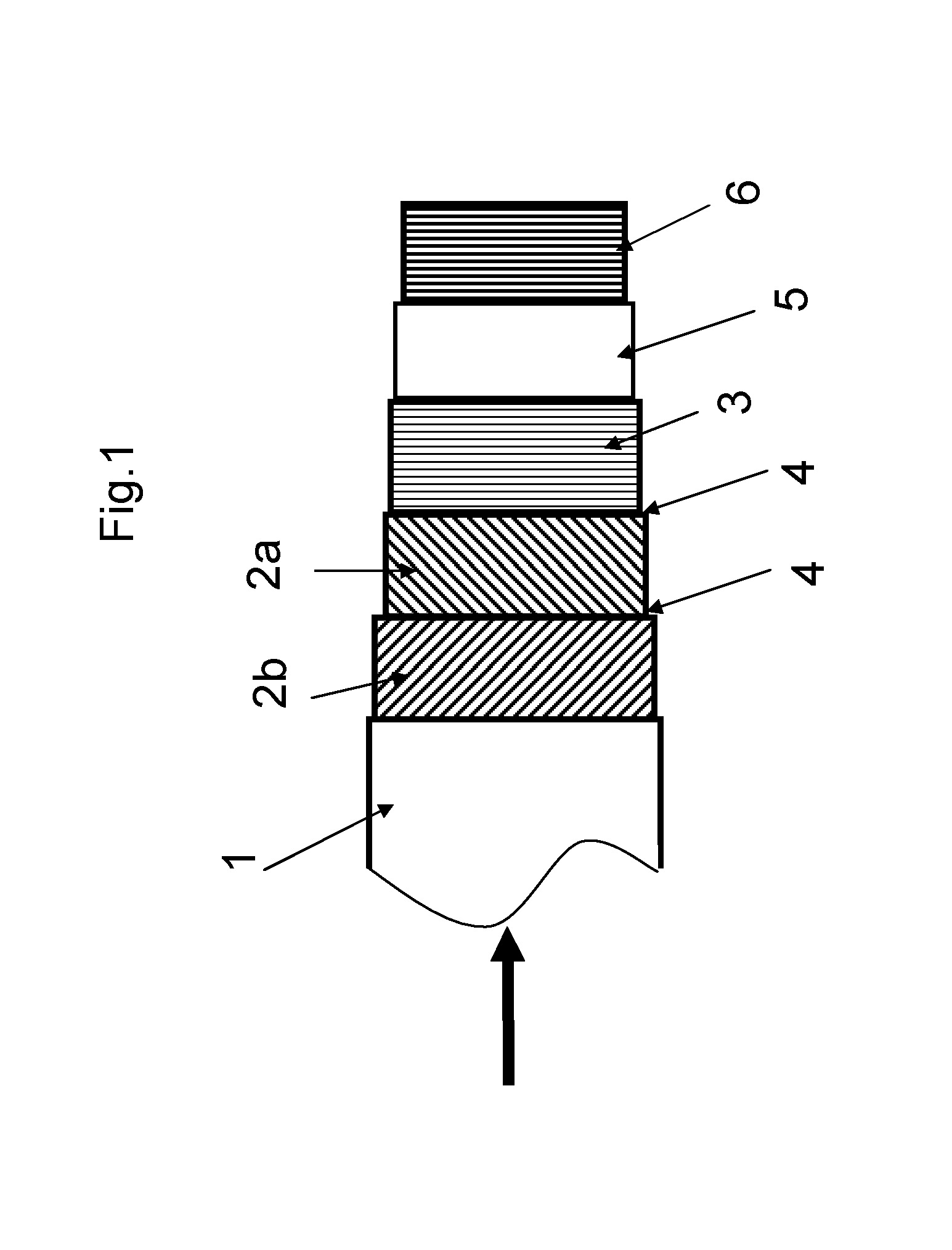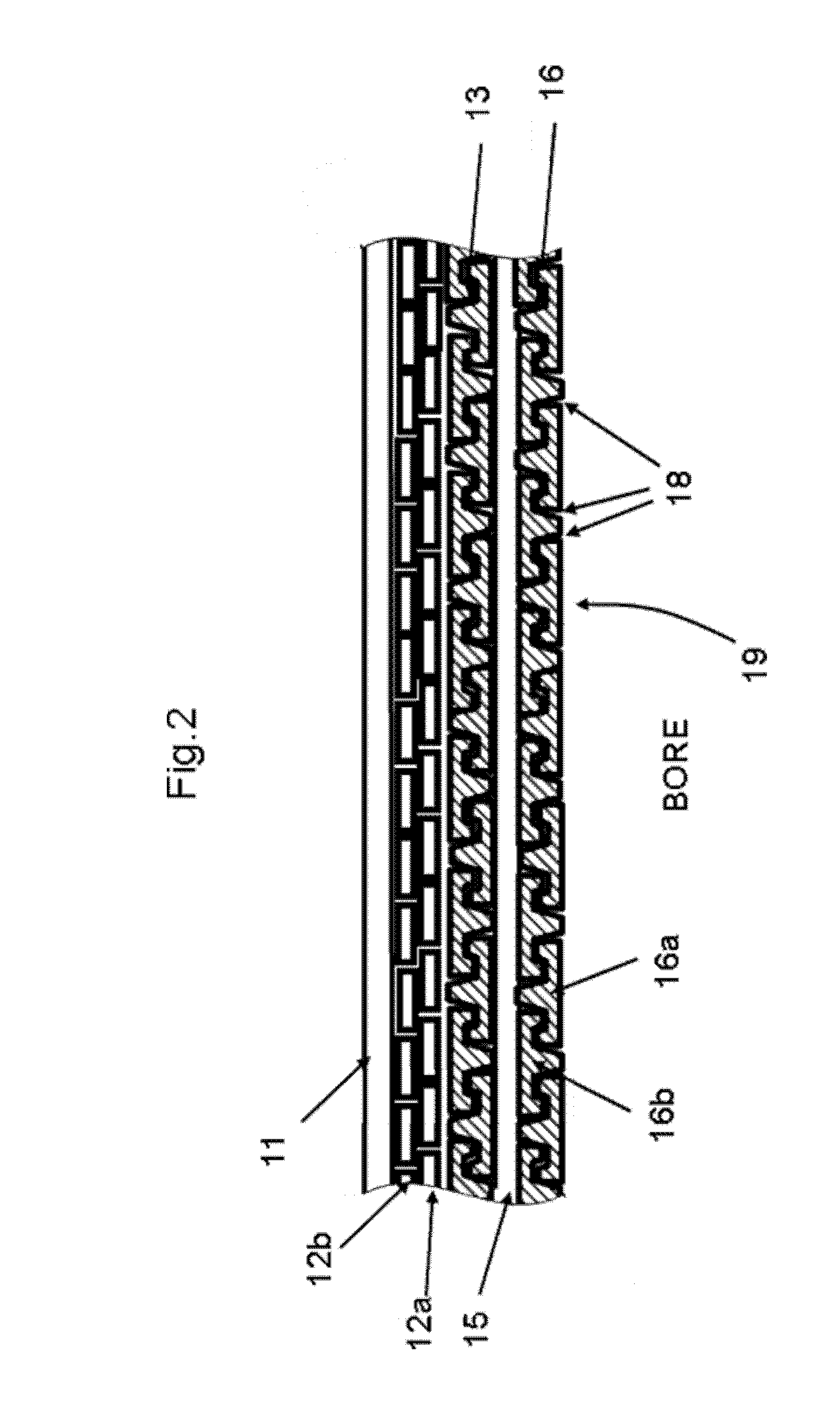Unbonded flexible pipe
a flexible pipe and unbonded technology, applied in the field of flexible pipes, can solve the problems of flow induced pressure pulsation (fip) from the flexible pipe carcass, unsatisfactory high pressure along the length of the pipe, etc., and achieve the effect of avoiding or reducing the risk
- Summary
- Abstract
- Description
- Claims
- Application Information
AI Technical Summary
Benefits of technology
Problems solved by technology
Method used
Image
Examples
Embodiment Construction
AND DESCRIPTION OF DRAWINGS The invention will be explained more fully below in connection with examples and with reference to the drawings.
[0130]FIG. 1 is a schematic side view of a flexible unbonded pipe of the invention.
[0131]FIG. 2 is a cross-sectional view of along the length of a flexible pipe of the invention where the layers of the pipe can be seen.
[0132]FIG. 3a is a cross-sectional view of a first carcass, where the cross-sectional cut is taken in cross-section of the profiled elongate element.
[0133]FIG. 3b is a cross-sectional view of a second carcass, where the cross-sectional cut is taken in cross-section of the profiled elongate elements.
[0134]FIG. 4a is a cross-sectional view of a variation of the third carcass, where the cross-sectional cut is taken in cross-section of the profiled elongate element.
[0135]FIG. 4b is a cross-sectional view of a variation of the third carcass, where the cross-sectional cut is taken in cross-section of the profiled elongate element.
[0136]...
PUM
 Login to View More
Login to View More Abstract
Description
Claims
Application Information
 Login to View More
Login to View More - R&D
- Intellectual Property
- Life Sciences
- Materials
- Tech Scout
- Unparalleled Data Quality
- Higher Quality Content
- 60% Fewer Hallucinations
Browse by: Latest US Patents, China's latest patents, Technical Efficacy Thesaurus, Application Domain, Technology Topic, Popular Technical Reports.
© 2025 PatSnap. All rights reserved.Legal|Privacy policy|Modern Slavery Act Transparency Statement|Sitemap|About US| Contact US: help@patsnap.com



